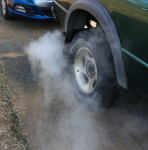backporch
Member
- Joined
- Dec 31, 2017
- Messages
- 172
- Reaction score
- 9
- Points
- 18
- Location
- NJ
- Vehicle Year
- 1999
- Make / Model
- Ranger Off Road
- Engine Type
- 4.0 V6
- Transmission
- Manual
- 2WD / 4WD
- 4WD
- Tire Size
- 245 75R16
Replacement engine is in and complete except for coolant. I wanted to hear it run before I dumped water in.
It starts and runs surprisingly good, but after a few seconds it makes a noise that sounds like something more along the lines of air going through a tube at high speed. Hard to describe. doesn't sound like a belt slipping and all pulleys appear to be working.
I feel like the noise is coming from the accessory area/ fan area.
Any thoughts? Could there be air flowing in the hoses/radiator?
How should the fan clutch work? the blades spin. I guess that is expected?
It starts and runs surprisingly good, but after a few seconds it makes a noise that sounds like something more along the lines of air going through a tube at high speed. Hard to describe. doesn't sound like a belt slipping and all pulleys appear to be working.
I feel like the noise is coming from the accessory area/ fan area.
Any thoughts? Could there be air flowing in the hoses/radiator?
How should the fan clutch work? the blades spin. I guess that is expected?















